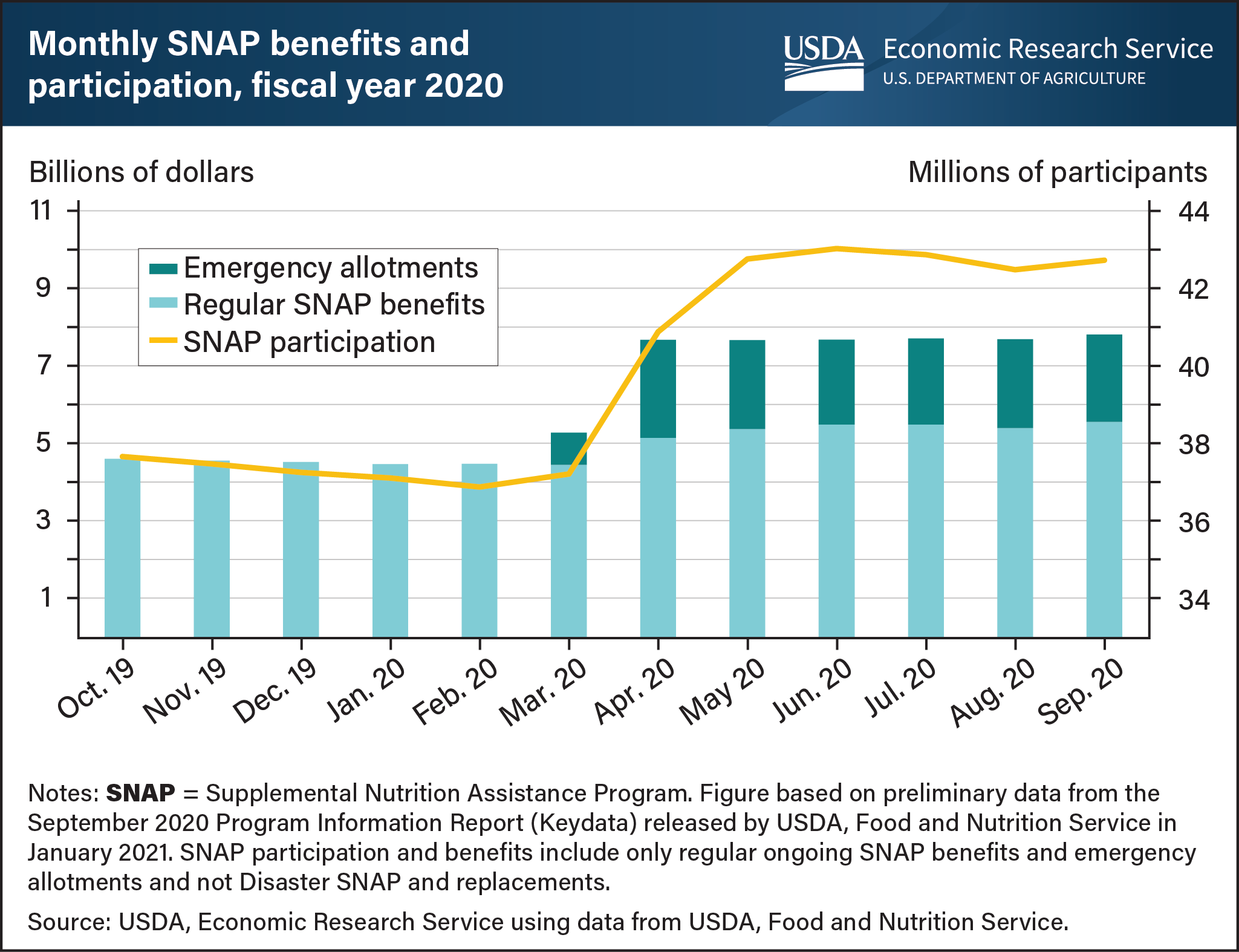Emergency allotments, participation increase led to 66-percent increase in SNAP benefits in second half of FY 2020
- by Jordan W. Jones
- 10/8/2021

The Coronavirus (COVID-19) pandemic increased the need for U.S. nutrition assistance in fiscal year (FY) 2020. To help meet this need, States with emergency or disaster declarations related to COVID-19 were allowed several flexibilities in administering the USDA’s Supplemental Nutrition Assistance Program (SNAP), including the option to provide emergency allotments to supplement regular benefits. Regular SNAP benefits are provided monthly and vary based on household size, income, and expenses. In FY 2020, emergency allotments supplemented the benefits of SNAP households receiving less than the maximum benefit, effectively raising all participating households’ monthly benefit amount to the maximum allowed for their size. The first States began issuing emergency allotments in late March 2020, and almost all States issued emergency allotments monthly through the end of the fiscal year in September 2020. SNAP participation rose to an average 42.5 million people per month in the second half of FY 2020 (April to September 2020), a 14-percent increase from 37.3 million in the first half (October 2019 to March 2020). Total SNAP benefits jumped to an average $7.7 billion a month in the second half of FY 2020, up 66 percent from $4.6 billion a month in the first half. Emergency allotments accounted for 30 percent of total benefits in the second half of FY 2020, or $2.3 billion a month. Together, these changes caused average monthly benefits per person to increase from about $125 in the first half of FY 2020 to about $181 in the second. This chart is based on a chart in the USDA, Economic Research Service’s Food and Nutrition Assistance Landscape: Fiscal Year 2020 Annual Report, released August 24, 2021.


